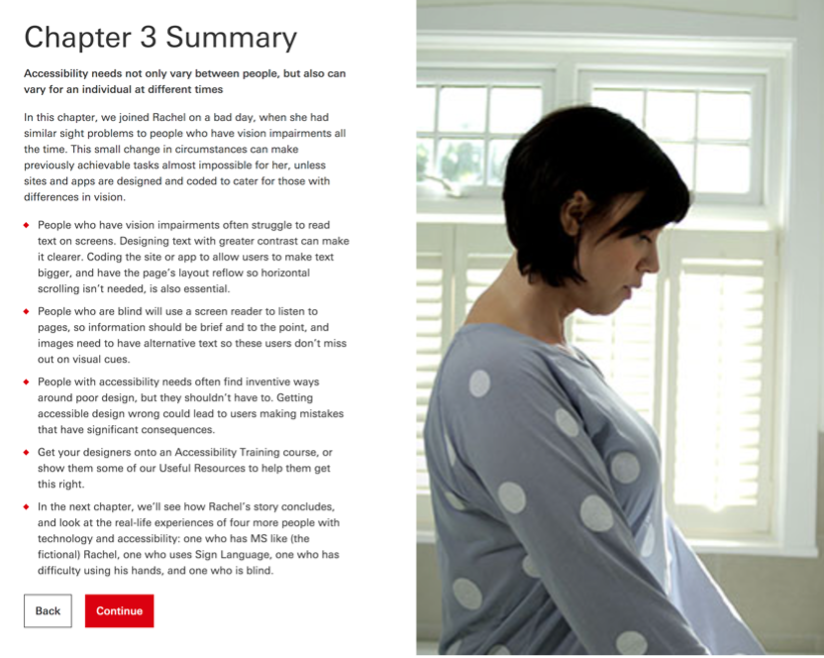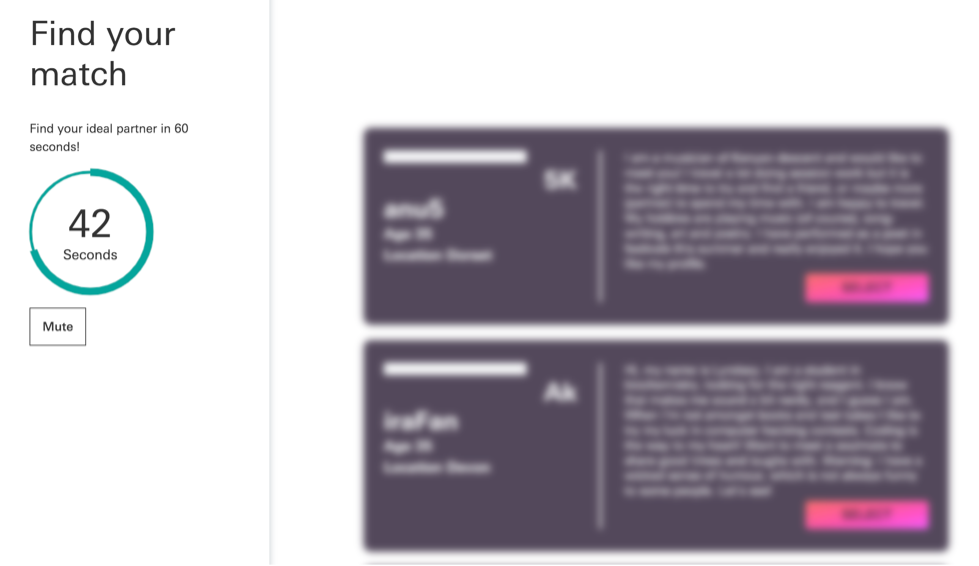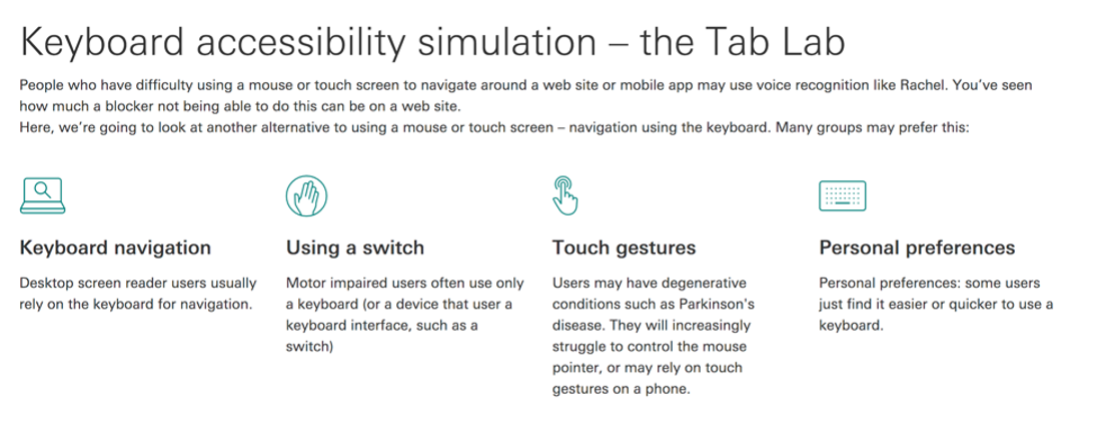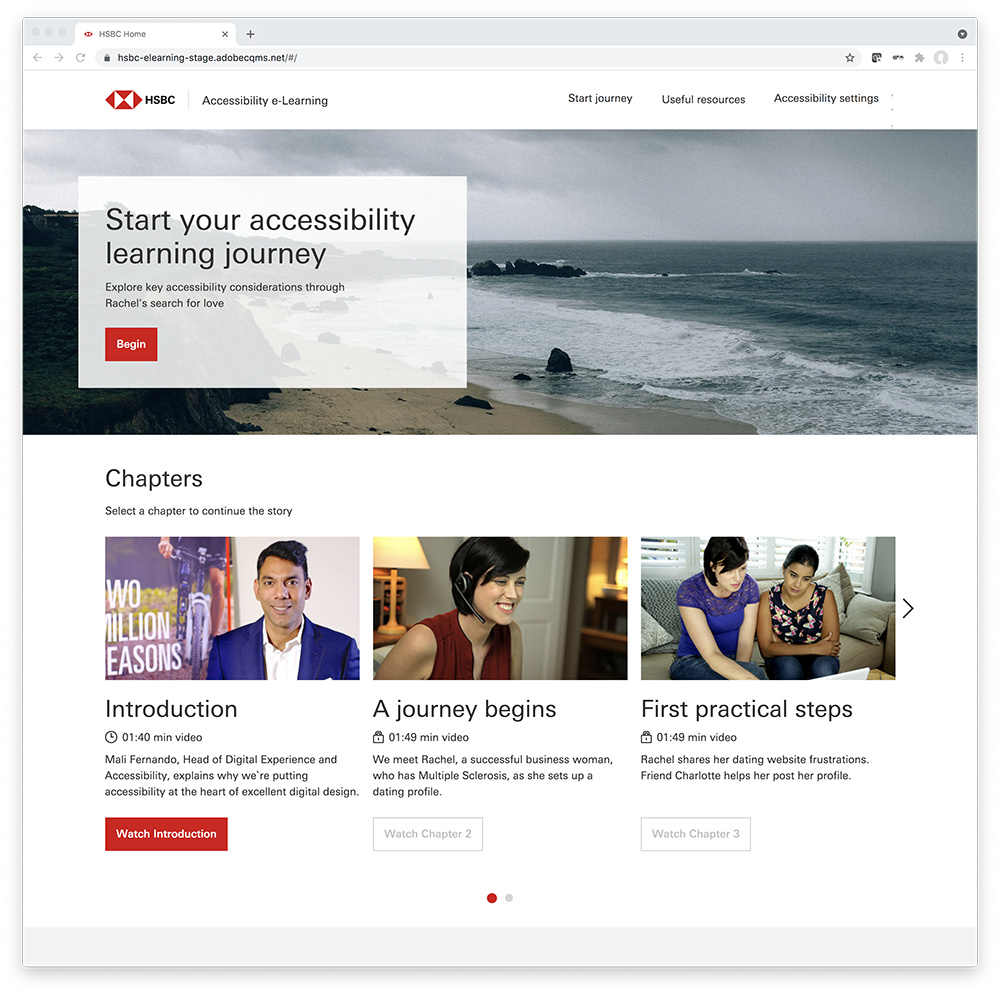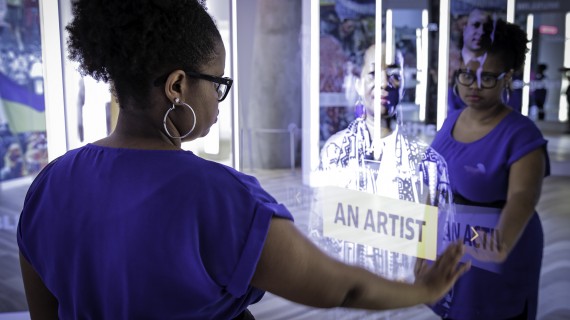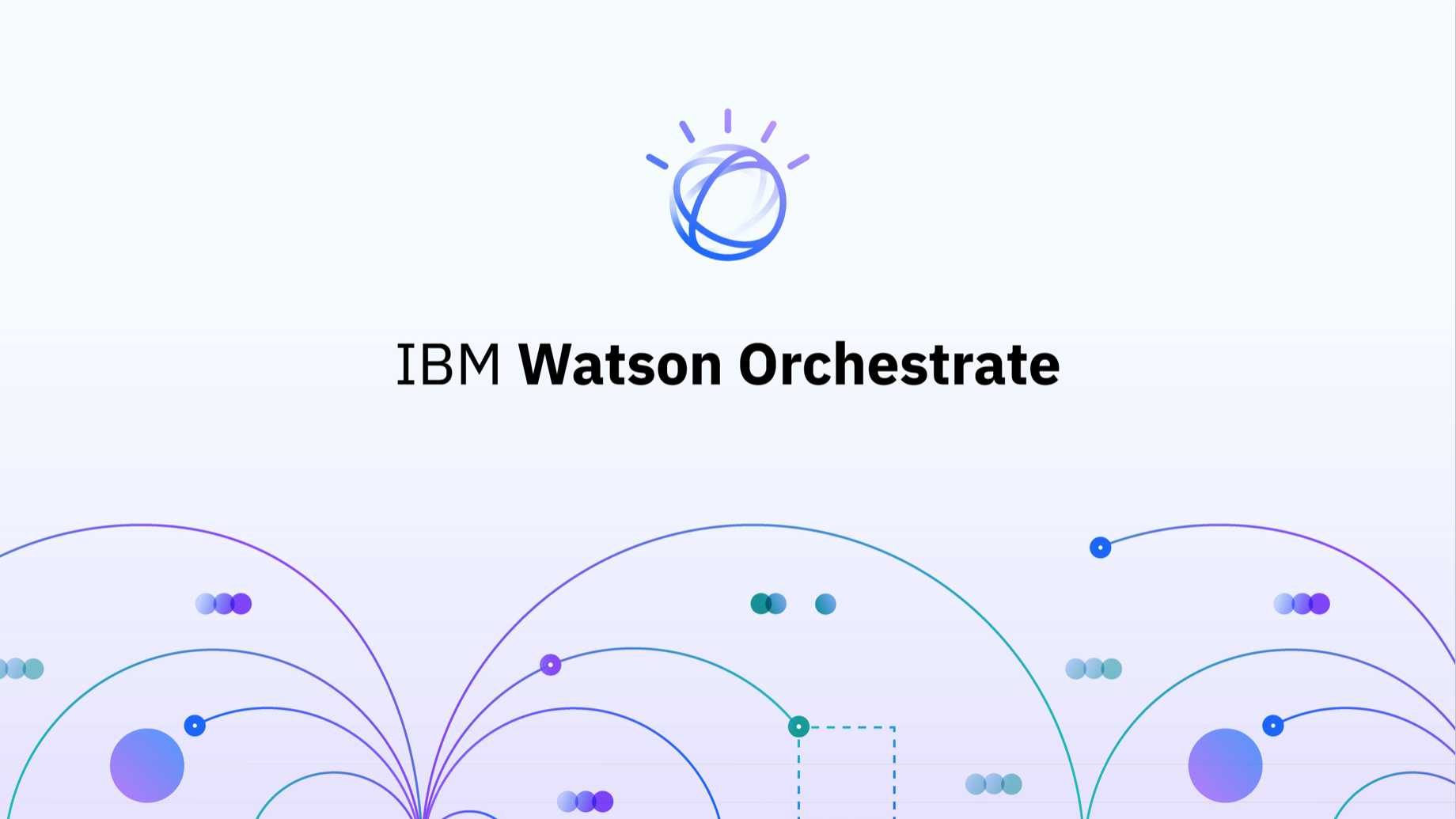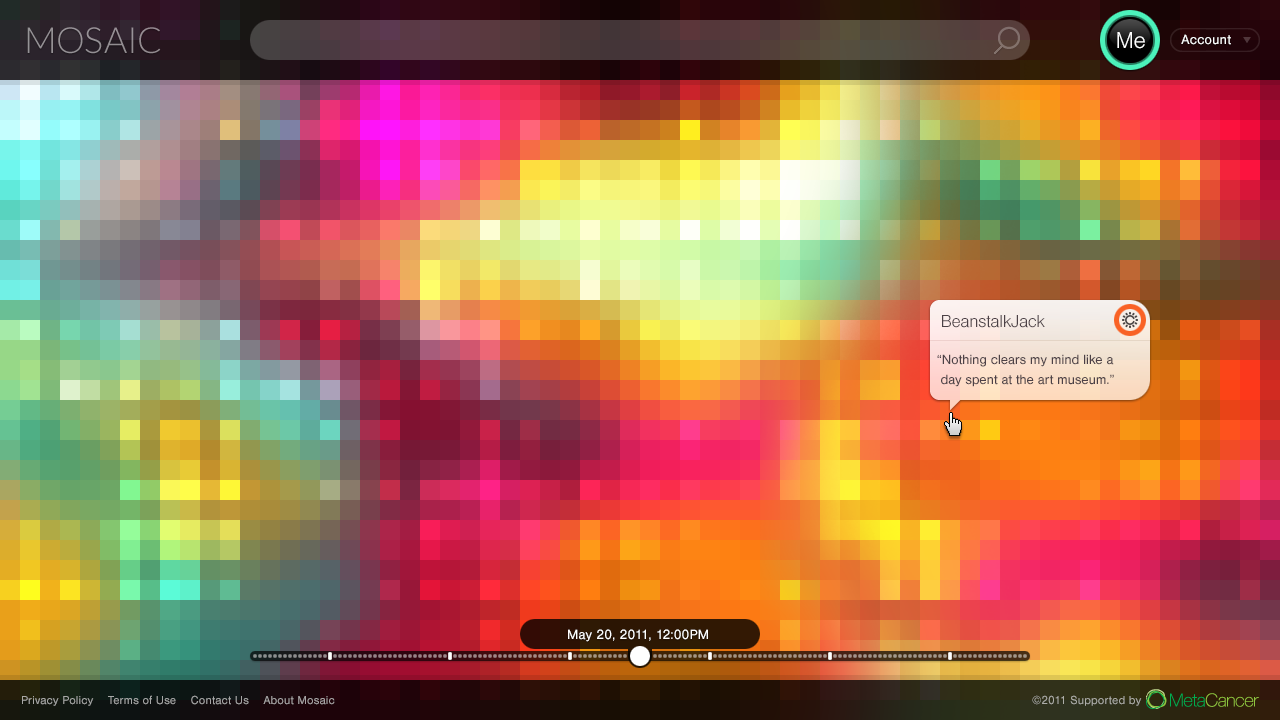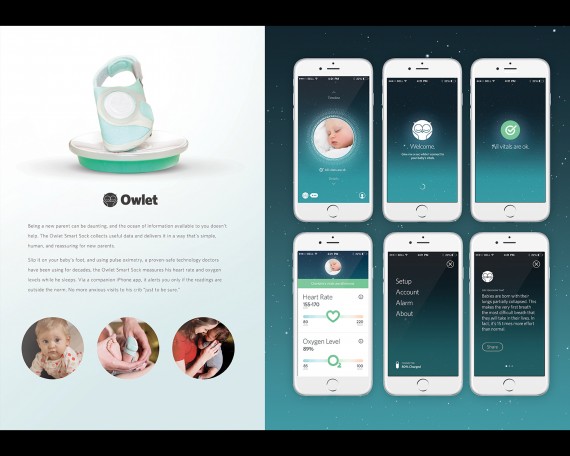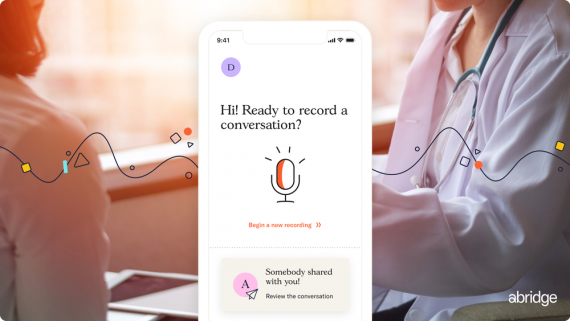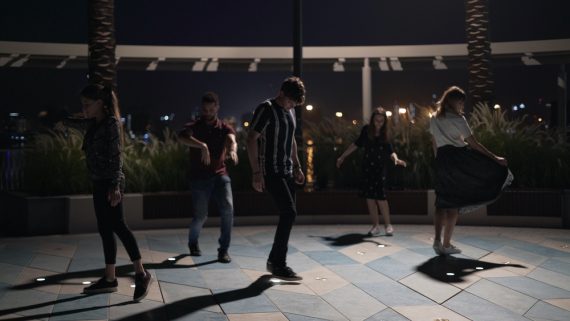HSBC Accessibility Hub
Team
Company | Institution
Category
Type
Project description
HSBC is one of the world’s largest banks. We serve 40 million customers in 64 countries. Our ambition is to become the most digitally accessible bank in the world. We’re committed to making all our digital channels accessible for people with disabilities – websites and apps for customers; cross-media campaigns for publicity; internal tools and eLearning for staff. To achieve this all our staff, contractors and suppliers need to deliver accessibility in their work – 235,000 staff globally creating digital documents, 30,000 working on digital projects, marketing agencies all over the world, and countless vendors providing digital tools.
In 2016, we established one of the most comprehensive international accessibility training programmes, including events to let thousands of staff know why accessibility is essential.
But that’s not enough. We needed a way of training our whole global workforce, working from home, whenever best suits them.
So we created an inspirational, impactful Accessibility Awareness eLearning course to upskill everyone. It’s fresh and engaging, totally authentic, and fully accessible. It was advised by our accessibility trainers, Hassell Inclusion. Atticmedia produced the “Rachel looking for love” film and documentaries. And Droxic created simulations of accessibility scenarios and packaged everything as eLearning.
The Accessibility Hub has launched, and is already removing barriers of lack of accessibility awareness and understanding from staff, and of what’s possible from engaging, inclusive courses from eLearning suppliers. We plan to make it publicly available later this year, to share our accessibility best practice with the wider public.
Opportunity
We needed to engage and motivate learners quickly, in the time they have to learn.
Many videos of people with disabilities help you empathise, illustrate how assistive technologies help, or show challenges people face when products aren’t accessible. Others are brief and impactful with great production-values. We needed both in one resource.
We also wanted learners to get first-hand experience of frustrations that people with disabilities have, through gamified simulations.
Audience research to generate a compelling concept
Having run accessibility awareness events for years, our accessibility trainers knew what staff found compelling. We introduced them to eLearning specialists to rethink this for eLearning.
To get past the limitations of video portraits to convey many messages, quickly, with impact, we included a fictional narrative. We ensured video looked as beautiful as HSBC’s adverts, to ensure people with disabilities are seen as a key not niche audience.
The narrative needed to be refreshing for bank staff, and relatable to people outside banking, so we chose an online dating theme, to highlight issues of disclosure and how technology can make people feel. We chose a protagonist with Multiple Sclerosis, as people with fluctuating conditions are often misunderstood.
Design process
Our other key audience were people with disabilities. The eLearning had to feel authentic to their experiences. So we involved them throughout, recruiting 4 people with disabilities for our Video Portraits. They also helped write the narrative script. We cast a lead actress with MS herself. All gave feedback on everything we created.
Another challenge was that eLearning can often be engaging, or inclusive, but not both. So we trained each supplier in innovative accessibility practices. From video editing to the design of navigation and simulations (of finding information on sites using a keyboard, or with blurred vision), everything aimed for the highest level of accessibility experience – beyond WCAG, or even usable accessibility, to enjoyable for all.
Impact
Accessibility Hub launched in late 2022. We anticipate 10,000+ people in the UK will use it in its first year, then our global staff-base.
User testing with people with disabilities found excellent usability and accessibility throughout: the simplicity of the interface; quality of captioning and audio-description; personalisation settings for dyslexic and autistic learners; and interaction design of the simulations. Videos portrayed their lived experiences accurately. People who have MS felt seen and understood:
“As someone who has also been diagnosed with MS I found it accurate, informative, touching and overall fantastic.”
People in HSBC love how engaging it is:
“So excited to see the bank not just ticking the box, but approaching this empathetically and creatively.”
“e-learning at work has never brought a tear to my eye before.”
We proved eLearning can be accessible, without losing interactive bells and whistles; and that accessibility messages can generate excitement and deep thought. This has already motivated other eLearning suppliers to aspire to the “engaging and inclusive” level the project achieved. To encourage them, we have funded accessibility training for 500 people in our suppliers’ teams.
In 2016, we established one of the most comprehensive international accessibility training programmes, including events to let thousands of staff know why accessibility is essential.
But that’s not enough. We needed a way of training our whole global workforce, working from home, whenever best suits them.
So we created an inspirational, impactful Accessibility Awareness eLearning course to upskill everyone. It’s fresh and engaging, totally authentic, and fully accessible. It was advised by our accessibility trainers, Hassell Inclusion. Atticmedia produced the “Rachel looking for love” film and documentaries. And Droxic created simulations of accessibility scenarios and packaged everything as eLearning.
The Accessibility Hub has launched, and is already removing barriers of lack of accessibility awareness and understanding from staff, and of what’s possible from engaging, inclusive courses from eLearning suppliers. We plan to make it publicly available later this year, to share our accessibility best practice with the wider public.
Opportunity
We needed to engage and motivate learners quickly, in the time they have to learn.
Many videos of people with disabilities help you empathise, illustrate how assistive technologies help, or show challenges people face when products aren’t accessible. Others are brief and impactful with great production-values. We needed both in one resource.
We also wanted learners to get first-hand experience of frustrations that people with disabilities have, through gamified simulations.
Audience research to generate a compelling concept
Having run accessibility awareness events for years, our accessibility trainers knew what staff found compelling. We introduced them to eLearning specialists to rethink this for eLearning.
To get past the limitations of video portraits to convey many messages, quickly, with impact, we included a fictional narrative. We ensured video looked as beautiful as HSBC’s adverts, to ensure people with disabilities are seen as a key not niche audience.
The narrative needed to be refreshing for bank staff, and relatable to people outside banking, so we chose an online dating theme, to highlight issues of disclosure and how technology can make people feel. We chose a protagonist with Multiple Sclerosis, as people with fluctuating conditions are often misunderstood.
Design process
Our other key audience were people with disabilities. The eLearning had to feel authentic to their experiences. So we involved them throughout, recruiting 4 people with disabilities for our Video Portraits. They also helped write the narrative script. We cast a lead actress with MS herself. All gave feedback on everything we created.
Another challenge was that eLearning can often be engaging, or inclusive, but not both. So we trained each supplier in innovative accessibility practices. From video editing to the design of navigation and simulations (of finding information on sites using a keyboard, or with blurred vision), everything aimed for the highest level of accessibility experience – beyond WCAG, or even usable accessibility, to enjoyable for all.
Impact
Accessibility Hub launched in late 2022. We anticipate 10,000+ people in the UK will use it in its first year, then our global staff-base.
User testing with people with disabilities found excellent usability and accessibility throughout: the simplicity of the interface; quality of captioning and audio-description; personalisation settings for dyslexic and autistic learners; and interaction design of the simulations. Videos portrayed their lived experiences accurately. People who have MS felt seen and understood:
“As someone who has also been diagnosed with MS I found it accurate, informative, touching and overall fantastic.”
People in HSBC love how engaging it is:
“So excited to see the bank not just ticking the box, but approaching this empathetically and creatively.”
“e-learning at work has never brought a tear to my eye before.”
We proved eLearning can be accessible, without losing interactive bells and whistles; and that accessibility messages can generate excitement and deep thought. This has already motivated other eLearning suppliers to aspire to the “engaging and inclusive” level the project achieved. To encourage them, we have funded accessibility training for 500 people in our suppliers’ teams.

